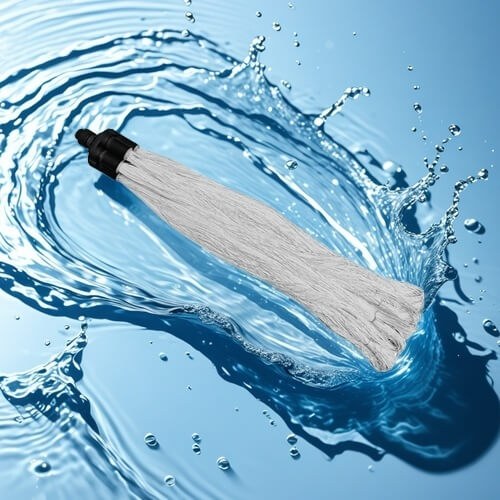How to achieve tailings wastewater treatment?
Tailings wastewater treatment is a key link in the mining production process. It mainly treats tailings wastewater containing a large amount of harmful substances generated during ore mining and processing to reduce environmental pollution and achieve rational use of water resources.
I. Characteristics of tailings wastewater
Complex composition: Tailings wastewater contains a large amount of heavy metal ions (such as copper, lead, zinc, cadmium, mercury, etc.), which come from the ore itself and the chemical agents used in the ore dressing process. For example, in the copper ore dressing process, tailings wastewater will contain a high concentration of copper ions. At the same time, there will be suspended matter (mainly ore particles), ore dressing agent residues (such as yellow medicine, black medicine and other flotation agents) and acidic or alkaline substances.
Water quality and water volume fluctuate greatly: its water volume depends on the scale and cycle of ore mining and processing. In the peak season of mine production, the amount of tailings wastewater will increase significantly; while during equipment maintenance or other shutdowns, the amount of wastewater will decrease. Water quality will also fluctuate due to factors such as changes in ore properties and adjustments to mineral processing technology. For example, when the grade of the mined ore changes, the heavy metal content in the tailings wastewater will also change accordingly.
II. The importance of tailings wastewater treatment
Environmental protection: If untreated tailings wastewater is discharged directly, it will cause serious pollution to surface water, soil and groundwater. Heavy metal ions will accumulate in water bodies, causing death or mutation of aquatic organisms, and will be passed to humans through the food chain, endangering human health. At the same time, acidic or alkaline tailings wastewater will change the pH of the soil, affecting soil fertility and vegetation growth.
Resource recycling: Tailings wastewater contains some valuable substances, such as heavy metals. Through effective treatment technology, these metals can be recovered to improve the utilization rate of mineral resources. In addition, the treated water can be reused to reduce the use of fresh water in the mine and reduce production costs.

3. Tailings sewage treatment methods
(I) Physical treatment methods
Sedimentation method
Principle: Use gravity to naturally settle suspended particles in tailings sewage. Generally, a sedimentation tank is set up at the tailings sewage discharge port to allow the sewage to stay in the tank for a certain period of time. For example, in some small mines, after the tailings sewage stays in the sedimentation tank for 2-4 hours, larger ore particles and some colloid substances will settle to the bottom of the tank.
Scope of application: It is suitable for removing larger particles of suspended matter and some heavy metal hydroxide precipitation. However, it has limited effect on the removal of some tiny particles and dissolved heavy metal ions.
Filtration method
Principle: The solid particles in the tailings sewage are intercepted by filtering media (such as quartz sand, filter screen, activated carbon, etc.). In some mining enterprises, multi-layer filtering devices are used, and the tailings sewage passes through different levels of filters such as coarse filtration and fine filtration in turn, which can effectively remove tiny particles.
Scope of application: It is used to remove fine suspended matter and some colloid substances in sewage and improve the clarity of water quality. However, the filter medium is prone to clogging and needs to be cleaned or replaced regularly.
(II) Chemical treatment method
Neutralization method
Principle: For acidic or alkaline tailings wastewater, add an appropriate amount of neutralizer to carry out neutralization reaction. For example, for acidic tailings wastewater, alkaline substances such as lime (CaO) or limestone (CaCO₃) can be added to make its pH value reach a range close to neutral. The reaction formula is such as CaO + 2H⁺ = Ca²⁺+ H₂O (taking lime neutralizing hydrogen ions as an example).
Scope of application: Widely used to adjust the pH of tailings wastewater so that subsequent treatment processes can play a better role. However, attention should be paid to the amount of neutralizer used, as excessive use may cause new pollution.
Chemical precipitation method
Principle: Add a precipitant to the tailings wastewater to form an insoluble precipitate of heavy metal ions. For example, adding sodium sulfide (Na₂S) can cause heavy metal ions (such as Pb²⁺, Cd²⁺, etc.) to form sulfide precipitates. Taking lead ions as an example, the reaction formula is Pb²⁺ + Na₂S = PbS↓+ 2Na⁺.
Scope of application: It can effectively remove heavy metal ions in tailings wastewater, but the selection and dosage of precipitants need to be optimized according to the type and concentration of heavy metals in the wastewater, and the generated precipitates need to be properly treated to prevent secondary pollution.
(III) Biological treatment method
Microbial treatment method
Principle: Use the metabolism of microorganisms (such as bacteria, fungi, etc.) to decompose organic pollutants in tailings wastewater, and adsorb and transform heavy metal ions to a certain extent. For example, some bacteria can decompose the organic components remaining in the mineral processing agent into carbon dioxide and water. At the same time, the functional groups on the cell wall of microorganisms (such as carboxyl, amino, etc.) can adsorb heavy metal ions.
Scope of application: Suitable for treating tailings wastewater containing organic pollutants and low concentrations of heavy metals. However, the growth and metabolism of microorganisms require suitable environmental conditions (such as temperature, pH value, etc.), and may be sensitive to highly toxic heavy metals and mineral processing agents.
